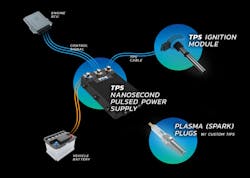It Will Take More than Electric Motors to Clean Up Our Cars and Trucks
Electric vehicles (EVs) will play a huge role in creating a greener transportation ecosystem in the years ahead as more and more consumers purchase and drive them. However, EVs are not a complete solution. Cars and trucks with cleaner internal combustion engine vehicles and hybrids will be needed for decades to come, even as EVs become more widespread.
Let’s imagine that by 2035, zero-emissions vehicles are everywhere. However, even if all new cars sold after 2035 are emissions-free, that would still leave hundreds of millions of gas-powered and hybrid vehicles on U.S. roads.
Between now and 2035, those hundreds of millions of vehicles will emit more than 9 trillion pounds of CO2 into the environment, and this is a conservative estimate. That’s five times the CO2 emissions created by the 2019 to 2020 Australian bush fires.
Gas powered and hybrid vehicles sold before 2035 will continue to pollute our air well after 2035. If a greener planet is truly the goal, car manufacturers must figure out how to reduce pollution immediately.
One way to reduce pollution and improve the fuel efficiency of ICEs and hybrids is by using dilute combustion modes. In other words, make it possible for gas-powered vehicles to burn dilute air-fuel mixtures far more efficiently. This can be done now; there’s no need to wait for the widespread use of EVs and all that entails.
Over the years, automotive OEMs have implemented several approaches that have increased fuel efficiency and reduced emissions, including gasoline direct-injection (GDI), turbocharged engines, supercharged Miller-cycle engines, and exhaust gas recirculation (EGR). These have all been effective, but there is still room for improvement.
It bears mentioning that none of these OEMs have made any advances in ignition technology. As a result, most cars use basically the same type of ignition used in the 1908 Model T Ford: a spark ignition with a high-voltage coil.
Unfortunately, conventional spark ignition isn’t the best way to ignite the mixtures needed to cut emission in today’s engines. When conventional spark ignitions attempt to ignite dilute air-fuel mixtures, the results are like using plugs that have outlived their lifespan: misfires and engine knocking. But the lack of advancements in ignition technology has left lots of opportunities for innovation.
For conventional spark ignition to operate more effectively, the engine must burn more fuel and generate more toxic exhaust. More advanced ignition systems could be key to cleaner and more efficient fuel-burning vehicles.
One such alternative is the nanosecond-pulsed-power transient plasma ignition developed by my company, Transient Plasma Systems. It uses precisely controlled, incredibly fast-rising electrical pulses tens of kV in amplitude to create plasma bursts. These bursts are more like miniature lightning bolts than sparks, and they ignite lean air-fuel mixtures far more efficiently. Furthermore, the new ignition also significantly reduces toxic exhaust gases.
Each electric pulse lasts just 10 nanoseconds, or a few billionths of a second. The result is an ignition that delivers incredibly high peak power but consumes a surprisingly low amount of energy.
According to independent testing by Argonne and Sandia National Labs, the TPS ignition can boost fuel efficiency by up to 20% while reducing NOx emissions by more than 50%. If these ignition systems were installed in all new cars sold in the U.S., in just a year it would translate to 18 billion fewer pounds of CO2 and 157 million fewer pounds of NOx emissions annually. Meanwhile, every new car owner would save an estimated $200 per year on fuel.
But that’s just when you consider the TPS ignition as the only improvement to conventional powertrains operating independently. The benefits would increase if the ignition was paired with some of the other emissions-reduction and fuel efficiency technologies automakers can bring to bear, including GDI, EGR, engine downsizing, turbo boost, the Miller-cycle supercharger, e-boost and hybrid gas/electric drivetrains.
Just as importantly, the new ignition is easy to-add to current vehicle designs; it does not require an engine redesign or complex changes. And it can be assembled from off-the-shelf and commercially available components. The cost of a TPS ignition is targeted to be consistent with the fuel efficiency benefits it provides, and the payback period for the consumer is estimated to be 18 months.
Ultimately, if a greener planet is our goal, car manufacturers can’t continue to ignore ICE innovation while focusing solely on EV development. We must also eliminate regulation loopholes that continue to harm the environment. EVs are not a complete solution to our pollution problems, and it’s dangerous to pretend they are.
In the decades ahead, auto companies can achieve large fuel efficiency gains and emission reductions by rethinking their approach to ignition, and it’s time they did so with urgency. OEMs must explore and implement new ignition technologies swiftly, and stricter emissions regulations would give them an incentive to do so.
Dan Singleton is CEO of Transient Plasma Systems Inc.

